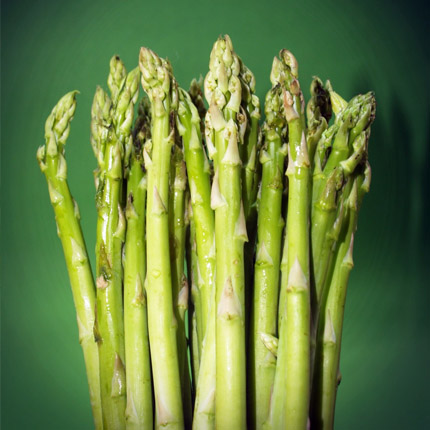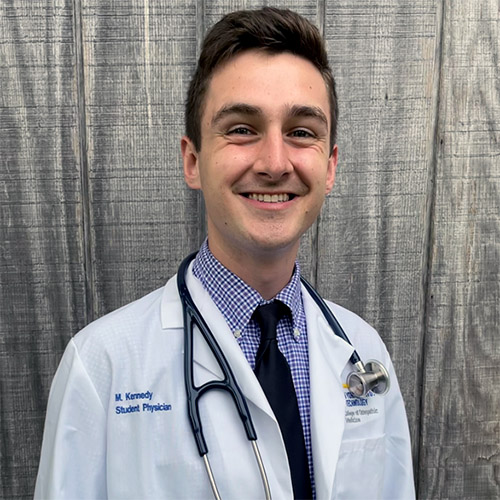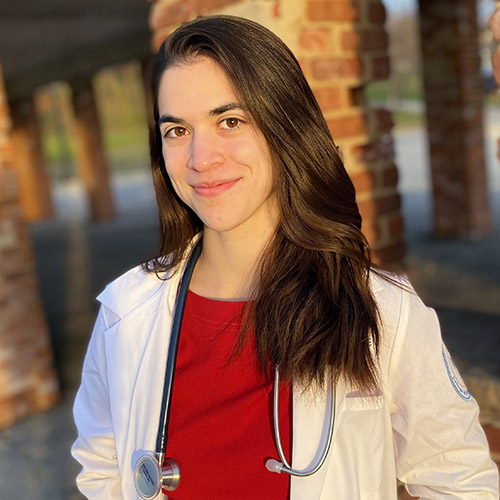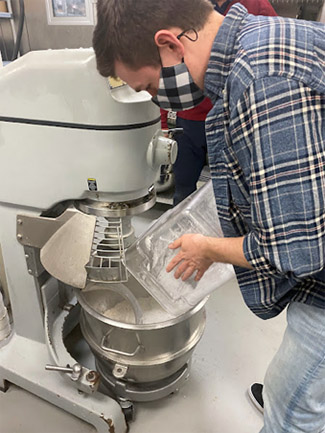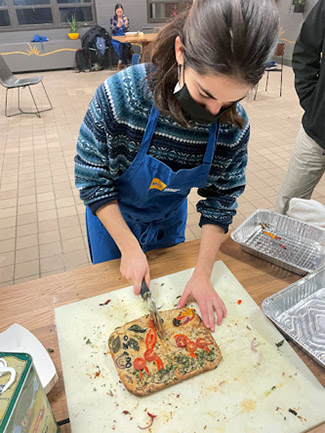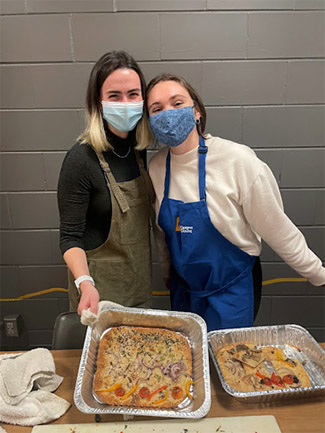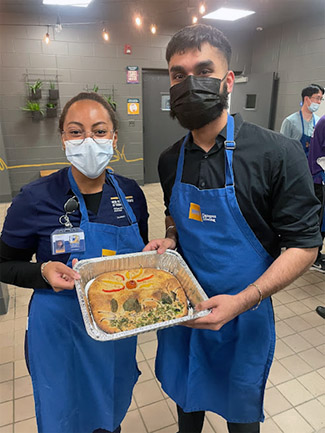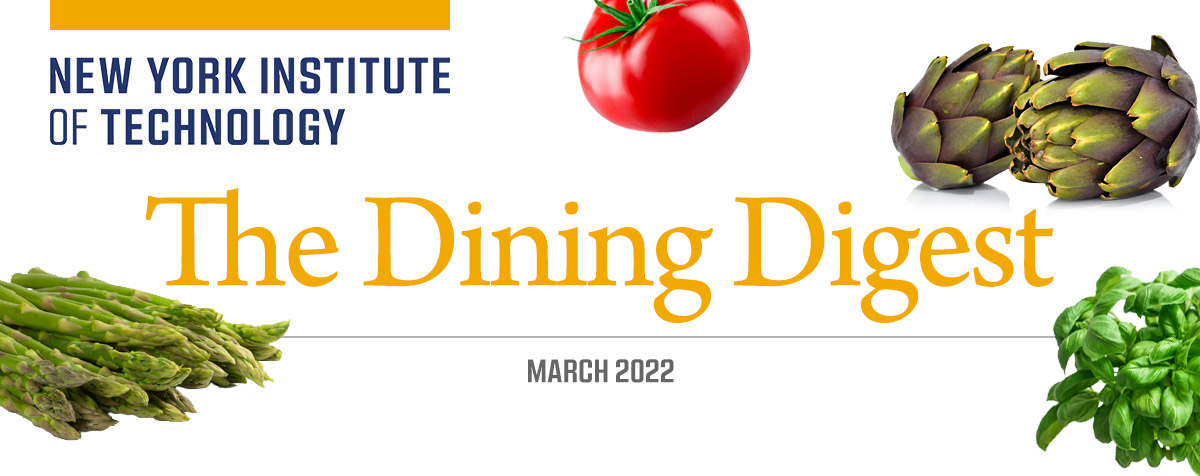
|
March Seasonal Foods
Artichokes
Artichokes are the edible portions of the thistle flower (yep!), which is in season from March to May. They may seem intimidating with their spiky leaves, but once you’ve tasted them, you’ll know they are worth the effort it takes to prepare and eat them. When shopping for artichokes, look for tightly packed leaves and give each one a good squeeze to see if it squeaks a bit. That's a good one! One medium-size, cooked artichoke provides more than 20 percent of the recommended daily value for folate and vitamin K, as well as more than 10 percent of the recommended daily value for vitamin C, magnesium, manganese, and potassium.
|
|
Asparagus
Asparagus, a flowering perennial vegetable, is in season from March to June. It grows in spears and has four varieties: green, purple, white, and wild. Asparagus is a perennial spring favorite and always best when eaten in season. High in vitamin K and folate, asparagus is high in anti-inflammatory and antioxidant nutrients, including vitamins C and E and beta-carotene, and the minerals manganese, zinc, and selenium.
|
|
|
Campus Dining Updates
- The Fork in the Road food truck returned to the Long Island campus on March 7. It is currently offering halal menus and value meals.
- Salten Cafe in Long Island is adding on specialty Starbucks drinks, including espresso, cappuccino, and lattes, and quicks grab-and-go hot meals.
- Metro Café on the New York City campus is open, serving coffee beverages grab and go sandwiches, salads hot meals, snacks
- Orso Café is now serving specialty items Monday through Thursday:
- Monday: Asian (General Tso chicken, Sweet Thai chili shrimp, spring rolls, pot stickers, fried rice, sesame skewers)
- Tuesday: Taco/Burrito Day (hard and soft shell tacos with beef, chicken, fish and veggie [brussels sprout tacos], stewed black beans, Mexican rice, fried plantains and all the fixings)
- Wednesday: Burger Day (beef, turkey, veggie, and Halal burgers, onion rings, fries, and sweet potato tots with all the fixings)
- Thursday: South Asian (Halal butter chicken, tikka masala, and curried goat, falafel, vegetable samosas, cumin-scented rice)
|
|
Pizza Recipe from Chef Luis
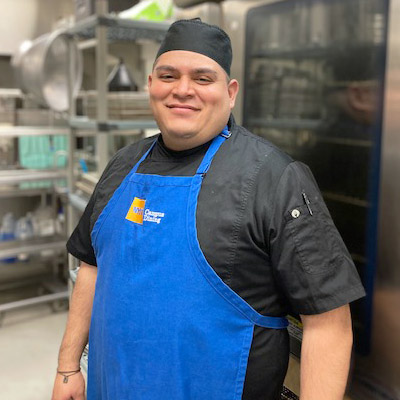
|
Chef Luis Echeverria is the head pizza chef at the Orso Cafe. He began working in the restaurant industry in 2005 and quickly learned the art of making pizza. Chef Luis began working at NYIT de Seversky Mansion in 2007 and slowly moved himself up to the ranks of head chef. At the Orso Cafe, New York Tech’s students line up to see what type of pizza pie Luis will be creating next. With his own signature style, he has crafted everything from a traditional pizza pie to a toppings-packed “Super Bowl” pie, and even a one-of-a-kind peanut butter-and-jelly pie.
When asked what goes into making a pizza, Chef Luis says, “it’s all in the dough.” His favorite pizza to make is a classic regular pizza topped with jalapenos or buffalo sauce—because what’s life without some spice?
Chef Luis can also make gluten-free and whole wheat pizza to accommodate students’ dietary needs.
Fun Fact: When Luis isn’t making delicious pizzas, his favorite dish to make is Carne Guisada, or meat and potatoes.
PIZZA DOUGH
Yields: One Pie
Ingredients:
- 2 – 2 ¼ cup bread flour
- 1 tablespoon granulated sugar
- 1 tablespoon salt
- 1 tablespoon olive oil
- 1 cup warm water
- 1 packet Fleischmann’s rapid rise yeast
|
Directions:
- In large bowl, mix together all ingredients.
- Put dough in a mixer for 2 minutes.
- Roll dough out in into a ball. When you are done rolling it, put a little oil on top, cover the dough, and try to not let it get too dry.
- Leave dough out for 5-10 minutes to let it rise, then you are ready to stretch it out to desired thickness, and add sauce along with desired toppings.
- Preheat oven to 475 degrees F and cook for 10 minutes.
|
PIZZA SAUCE FOR ONE PIE
Ingredients:
- 1 15-ounce can crushed tomatoes
- 1 tablespoon of extra virgin olive oil
- 2 tablespoons chopped fresh basil
- 1 ½ teaspoon dried oregano
- ½ teaspoon dried basil
- Salt and freshly ground black pepper
- 1 teaspoon garlic powder
- 1 ½ tablespoon tomato paste
- ½ tablespoon water
- 1 tablespoon salt
|
Directions:
- Combine all ingredients and blend well.
|
|
|
|
Student Spotlights
Who says that food can’t be nourishment, medicine, and art?
This month, we had the distinct pleasure of meeting with medical students Matthew Kennedy and Eden Alin, who are both involved in unique and creative organizations on campus.
Culinary Medicine & Nutrition Organization
|
Matthew Kennedy is a member of the Culinary Medicine & Nutrition Organization, founded six years ago to build a community of campus that is focused on culinary arts and nutrition. The organization has fostered interest in medical students who want to explore their creativity through cooking and learn how to counsel patients on nutrition and inequalities in food access.
|
|
The organization holds events where members can speak with physicians who have a specific focus on nutrition, whether it’s those who are treating patients with diabetes or who are culinary medicine certified. The group is also active in volunteering at food distribution sites like Island Harvest.
“The overall mission is to distribute food across Long Island and make sure people have adequate nutrition,” says Matthew. He also notes that now more than ever, there is a need for nutritional interventions because of the current state of food marketing and how food is consumed. There is a lot of conflicting information on food and nutrition because of many competing diet trends and intercultural differences—and patients may be unaware of what they are actually consuming.
Matthew’s overarching message: “Food is medicine, and food is health. You don’t have to sacrifice the foods you love but instead make healthier choices that will make you feel better.”
ARTery, the Art & Medicine Interest Group
Eden (Edie) Alin is the current president of ARTery, the Art & Medicine Interest Group. It began in 2017 as an experiment led by NYITCOM Assistant Professor of Anatomy Julia Molnar, who wanted to see if drawing could help students improve their anatomy studies and test scores.
|
|
In many subjects, learning can be supplemented and nurtured using visual arts such as painting, sketching, and collaging. Research shows that art not only improves observation skills, but also teamwork and logical thinking. In medicine, art has also been shown to ease anxiety, stress, and depression for both patients and care staff.
Last September 2021, Edie organized a Watercolor on the Water event in which 30 medical students gathered for a watercolor session to each paint a human eye. The group’s members continue to explore different ways to express themselves using art. Most recently, they held a workshop in which they collaborated with Matthew’s culinary medicine group to incorporate food into their art of medicine (see below).
Edie encourages her fellow students to step out of their comfort zone and dive into their creative side.
|
“Knead a Break” Focaccia Night
Both of the clubs haven’t been able to hold many in-person events over the past two years due to the pandemic, so Focaccia Night provided a much-needed get together. They met up at Orso Café to take a break from studying and participate in a fun, stress-relieving activity.
Using Focaccia bread as a canvas, the students used vegetables, and other toppings to serve as the “paint,” creating tasteful pieces of food art that brought both teams together. Hot chocolate and cookies were also served, capping off what Matthew called a “wonderful event.” The students offer a special thanks to Stacey, Robert, and Luis at Orso Café who helped make it such a memorable night.
|
March Holiday Highlight: Holi
Holi, also known as the “festival of colors,” is an ancient Hindu tradition and one of the most important festivals in India. It celebrates the arrival of spring, the end of winter, and the blossoming of love. For many, it is a festive day to connect with others, play and laugh, and repair broken and strained relationships. The festival also celebrates the beginning of a good spring harvest season. This year, the “holi”-day falls on March 18 (just a day after another much-loved traditional celebration—St. Patrick’s Day).
On the eve of the festival, large pyres are lit in many parts of India to signify the burning of evil spirits. People often throw wood, dried leaves, and twigs into these bonfires. On the day of Holi, streets and towns turn red, green, and yellow as people throw colored powder into the air. Each color has a meaning. Red symbolizes love and fertility, and green signifies new beginnings. People also splash water on each other in celebration using toy water guns and balloons filled with colored water that are flung from rooftops. Later in the day, families gather together for festive meals and often distribute sweets among neighbors and friends.
Happy Holi!
Find out more about Holi »
|
|
Follow us on Instagram to stay up to date on our daily menus!
|
Campus Catering
The dining team would like to offer its services, support, and expertise in planning your meetings and events, large or small, at the Long Island or New York City campuses, or off premise. Our chefs and event planners from the NYIT de Seversky Mansion and Campus Catering collaborate on many events, and we can customize menus from a continental breakfast to a seated event.
|
Campus Dining Wants Your Feedback
We’d love to hear from you! Please connect with us to submit your feedback and suggestions so we can better serve the New York Tech community.
The Dining Digest is New York Institute of Technology’s newsletter for university dining. It is published by Dining Services, New York Institute of Technology.
|
Copyright © 2022
New York Institute of Technology
|
|


